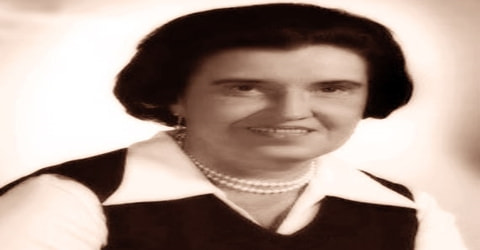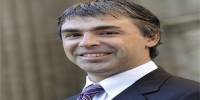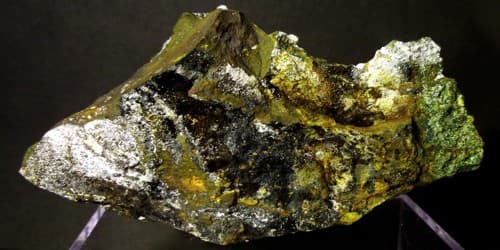Biography of Clifford Shull
Clifford Shull – American physicist.
Name: Clifford Glenwood Shull
Date of Birth: September 23, 1915
Place of Birth: Pittsburgh, Pennsylvania, United States
Date of Death: March 31, 2001 (aged 85)
Place of Death: Medford, Massachusetts, United States
Occupation: Physicist
Father: David Shull
Mother: Daisy Shull
Spouse/Ex: Martha-Nuel Summer (m. 1941)
Children: 3
Early Life
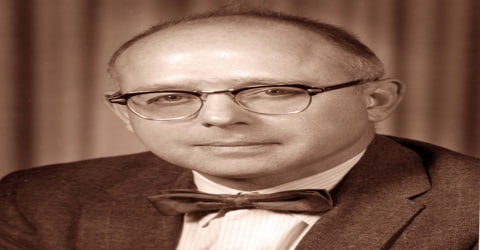
An American physicist who was co-recipient of the 1994 Nobel Prize for Physics for his development of neutron-scattering techniques, in particular, neutron diffraction, a process that enabled scientists to better explore the atomic structure of matter, Clifford Shull was born on September 23, 1915, in the Glenwood section of Pittsburgh, Pennsylvania.
As the youngest child of a middle-class businessman, Clifford attended school and college commuting from his home in Pittsburg. Later he moved to New York for a research and teaching job at the New York University. Although he wanted to join the Manhattan Project, he had to spend the war years at the Beacon laboratory working on high-performance aviation fuels and lubricants. After the war, he shifted to Clinton Laboratory, which was later renamed as the Oak Ridge National Laboratory, to work with Ernest Woolen on neutron scattering. Here he developed a technique to probe the molecular structure of materials by bouncing neutrons off them and received his Nobel Prize for it all most half a century later. However, according to his own admission, his most satisfying years were spent at Massachusetts Institute of Technology guiding young research students. Here too he continued his work on neutrons and initiated the first neutron diffraction investigations of magnetic materials.
Childhood, Family and Educational Life

Clifford G. Shull, in full Clifford Glenwood Shull, was born on September 23, 1915, in Pittsburgh, Pennsylvania, the U.S. His parents, David, and Daisy Shull came to the city from Perry County of Central Pennsylvania. Here David opened a small business, which later evolved into a hardware store that also offered home repair services. Clifford had two elder siblings, a sister named Evalyn May, and a brother named Perry Leo. In his Nobel Lecture, Clifford later said that he was the baby of the family and had a very happy childhood.
Clifford attended neighborhood schools, then enrolled in Schenley High School. At Schenley, a dynamic instructor sparked Shull’s interest in physics, causing him to reconsider his initial ambition to be an aeronautical engineer.
Although originally keen on aeronautical engineering he began to develop an interest in physics under the influence of his physics master Paul Dysart. Therefore, after passing out in 1933, he enrolled at Carnegie Institute of Technology (now renamed Carnegie Mellon University), Pittsburg with physics as his major. The institute offered two main advantages. As it was located in Pittsburg, he could commute from home and save some money. He also received half tuition scholarship because of his good academic records. Equally important was the fact that the institution offered good curricula in physics. Under the influence of Harry Hower, the Head of the Physics Department, his interest in the subject increased manifold.
After graduating, he won a partial scholarship to the Carnegie Institute of Technology, now Carnegie Mellon University, and immersed himself in his studies. DuringShull’s freshman year, however, his father died suddenly, precipitating not only an emotional but a financial crisis for the family. As a result, Shull’s older brother, Perry, quit his job as an art teacher and ran their fathers business until his younger sibling had graduated from college. After receiving his B.A. from Carnegie, Shull entered the graduate physics program at New York University.
Clifford joined a nuclear physics group headed by Frank Myers and Robert Huntoon. Later he assisted Frank Myers and Richard Cox in building a new 400 keV Van de Graaff generator. Once it was built, they used it for repeating the electron-double-scattering (EDS) experiment. As part of the project, he had to collect data and analyze them. The experiment formed a part of his doctoral thesis.
Personal Life
Clifford Shull met Martha-Nuel Summer at New York while he was pursuing his Ph.D. at New York University. They got married in 1941. The couple had three sons, John C. Shull, Robert D.Shull and William F. Shull.
Career and Works
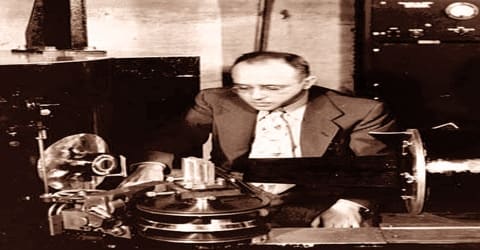
After receiving his Ph.D. from New York University, Clifford Shull accepted a research position at The Texas Company, now Texaco, in Beacon, New York. There, he used gas absorption as well as x-ray diffraction and scattering to analyze catalysts used in the production of high-performance aviation fuel. This research took on great importance following the entry of the United States into World War II. However, Shull, like many other young physicists of the time, was very interested in the Manhattan Project. He had seen several of his former university friends and professors join in the race to produce the first nuclear weapon and longed to take part as well. Yet when an attempt was made to recruit him, The Texas Company blocked his way, eventually convincing government manpower board that his research for them was more crucial to the wartime effort.
As the USA joined the Second World War in December, Clifford wanted to join the Manhattan Project, where scientists were working to create the atomic bomb. Since the work he was doing was equally important his company did not release him and he had to stay back. Clifford’s work at the Texas Company was interesting. It gave him the opportunity to broaden his knowledge base. Here he learned about crystallography, diffraction process, etc. However, a visit to Clinton Laboratory (now Oak Ridge National Laboratory) in Tennessee drew his attention to the new developments in nuclear physics.
His award-winning work was completed at the Oak Ridge National Laboratories in Tennessee from 1946 to 1955, under the leadership of Ernest O. Wollan, the pioneer of neutron-scattering research. In the technique of neutron diffraction, a beam of single-wavelength neutrons is passed through the material under study. Neutrons hitting atoms of the target material are scattered into a pattern that, when recorded on photographic film, yields information about the relative positions of atoms in the material. Shull was also one of the first to demonstrate magnetic diffraction, and he helped to develop instrumentation for the routine crystallographic analysis of neutrons.
Clifford and Wollan discovered that neutrons, upon hitting the atoms within a fluid or solid sample, ricochet in a characteristic fashion. Specifically, the angle at which the neutrons are deflected shows how the atoms are arranged. In other words, neutron scattering effectively determines the atomic structure of a sample. Neutron scattering was a truly revolutionary discovery, opening new avenues of research as it shed new light on important substances, such as the element hydrogen, that had been resistant to earlier methods of analysis. It wasn’t until 1994 that the Nobel committee recognized the work of Clifford Shull and Wollan, awarding the Nobel Prize in physics to Shull (and Bertram Brockhouse). Sadly, Wollan had died in 1984.
In 1955, Clifford joined Massachusetts Institute of Technology as a faculty member. Here he was happy to guide graduate research students at the MITR-I research reactor. His group carried on a number of experiments using neutron radiation from the reactor. He retired in 1986. He did some exceptional work in the field of internal magnetization in crystals, development of polarized beam technology, dynamical scattering in perfect crystals and fundamental properties of the neutron. Although he retired in 1986, he remained active for long and continued visiting his laboratory just to watch the students working there.
Awards and Honor
Professor Clifford Shull’s awards include the Buckley Prize, which he received from the American Physical Society in 1956, and election to the American Academy of Arts and Sciences (1956) and to the National Academy of Sciences (1975).
In 1993 Clifford Shull received the Royal Swedish Academy of Sciences’ Gregori Aminoff prize for his “development and application of neutron diffraction methods for studies of atomic and magnetic structures of solids.”
In 1994, Clifford Shull received the Nobel Prize in Physics jointly with Bertram N. Brockhouse for the development of neutron diffraction technique. In his Nobel speech, he acknowledged the contribution of Ernest Woolen. He believed that had Woolen not died early, he too has received the same honor.
‘The Clifford G. Shull Prize in Neutron Physics’ has been established in his honor by the Neutron Scattering Society of America.
Oak Ridge National Laboratory, earlier known as Clinton Laboratory, has established ‘Clifford G. Shull Fellowship’ in his honor.
Death and Legacy
Clifford Glenwood Shull died on March 31, 2001, in Medford, Massachusetts. He was 85.
Clifford’s most significant research was undertaken while he was working at Clinton Laboratory under Ernest Woolen. Here, he developed a method by which the relative positions of the atoms in the material can easily be deduced. The invention later promoted further research into a wide variety of objects such as superconductors and viruses. He aimed a beam of single-wavelength neutrons, traveling at a specific velocity, at the material under observation. When the neutrons hit the atoms of the material they scattered in a specific pattern, which was recorded on photographic films. Later he analyzed the pattern and by doing so deduced the position of the atom.
’Shull Rocks’, located in Antarctica, has been named after Clifford Shull by the United Kingdom Antarctic Place-Names Committee. It is a chain of snow-covered rocks lying in Crystal Sound about 16 km northwest of Cape Rey, Graham Land. The ‘Glenwood’ in Clifford Glenwood Shull’s name comes from the Glenwood locality in Pittsburg, where he was born and brought up.
Information Source:

